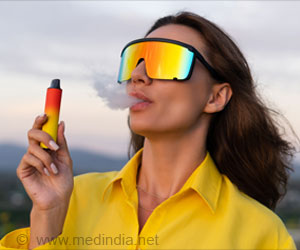Brain researchers at The University of Texas Southwestern Medical Center have gained fresh insights into cocaine addiction, which may pave the way for more effective treatments for this problem.
Fresh insights into cocaine addiction, which may pave the way for more effective treatments for this problem, have been revealed by researchers at the University of Texas Southwestern Medical Center.
Reporting their findings in the journal Neuron, the researchers said that they had identified specific brain mechanisms that underlie addiction-related structural changes in the brain.The new findings attain significance as they provide surprising insight into how such changes may actually defend the brain during excessive drug use.
It has been hypothesized that long-term physical changes in the brain might underlie enduring behaviours associated with drug abuse. One long-lasting structural correlate that has been observed across many models of addiction is an increase in the density of dendritic spines on medium-sized spiny neurons (MSNs) in the nucleus accumbens (NAc).
The spines represent critical points of communication, called excitatory synapses, between brain cells. The density of these inputs could have a major impact on the way information is processed in the brain and may regulate addiction-related behaviors.
"Although several groups have documented that repeated cocaine exposure increases NAc spine density, the precise molecular mechanisms that control this process have remained elusive," says senior study author Dr. Christopher W. Cowan from the Department of Psychiatry at The University of Texas Southwestern Medical Center.
"Moreover, the cocaine-induced increase in NAc spine density has been hypothesized to contribute to the long-lasting behavioral sensitization that occurs after repeated cocaine exposure, but direct evidence concerning the functional relationship between these two processes is lacking," he adds.
Advertisement
The myocyte enhancer factor 2 (MEF2) family of transcription factors are Cdk5 targets that are expressed throughout the developing and adult brain and have been implicated in the regulation of excitatory synapses.
The expression of an overactive form of MEF2 in the NAc that blocked cocaine-induced spine density was associated with an enhanced behavioural sensitivity to cocaine whereas reduction of endogenous MEF2 proteins reduced these behaviours.
Based on the study's results, the researchers came to the conclusion that the cocaine-induced increases in dendritic spine density might actually limit behavioural changes associated with drug addiction rather than support them.
"Taken together, our findings implicate MEF2 as a key regulator of structural synapse plasticity and sensitized responses to cocaine and suggest that reducing MEF2 activity, and thereby increasing spine density, in the NAc may be a compensatory mechanism to limit long-lasting maladaptive behavioral responses to cocaine," says Dr. Cowan.
"A better understanding of the MEF2-associated molecular mechanisms that regulate cocaine-induced structural and behavioral plasticity could ultimately lead to the development of improved treatments for drug addiction," he adds.
Source-ANI
RAS/L















